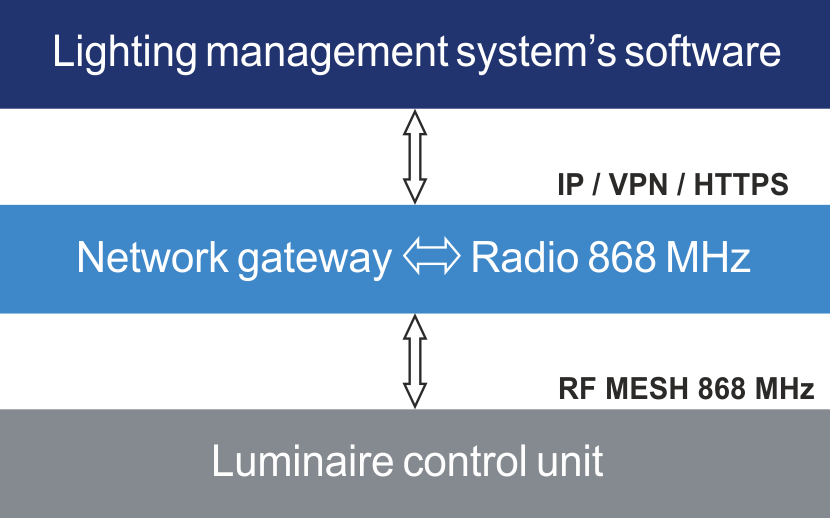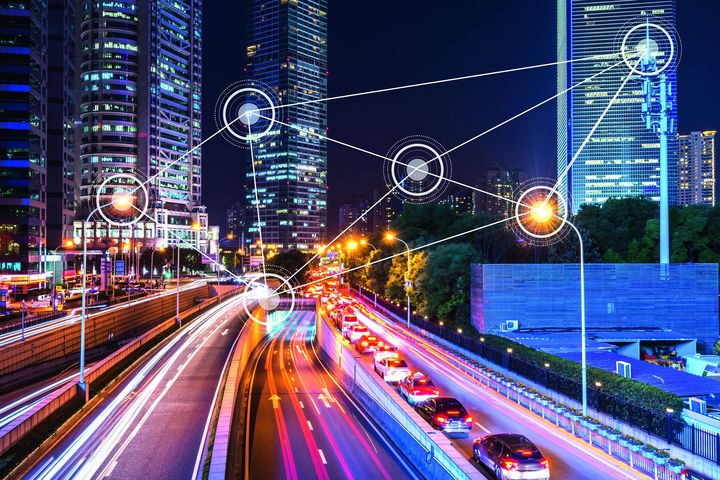Outdoor lighting management system
LMS VCS Lighting has extensive functionality and greatly improves the efficiency of managing the street and road luminaires.
This control system has been widely recognized in Russia, CIS and many other countries all over the world.
LMS VCS Lighting allows to:
- Remotely read luminaire data in a continuous mode;
- Remotely monitor streetlight failures;
- Receive external signals from traffic control systems to set the appropriate light intensity;
- Remotely control one or several luminaires using manual or auto scheduling;
- Flexibly manage lighting rules;
- Monitor service life period of each individual luminaire;
- Monitor degradation of the phosphor system;
- Monitor the energy consumption of each luminaire and the total energy consumption at the electrical connection point;
- Detect illegal connection or cable theft;
- Possibility to upgrade the firmware of a luminaire on the air;
- Real-time billing for calculating the budget in monetary terms.
A company or a person could save at least 50% of the energy by replacing old-fashioned lamps with LED luminaires with a similar light level, not to mention the additional benefits associated with the disposal of used lamps, etc. Our research shows that equipping LED luminaires with smart control can bring you another 10–5% of energy saving, which will be 1 year of free energy in 10-year terms.

Data Center Level: Cloud software or deployed on customer’s servers.
Network Infrastructure Level: Street luminaires control box, radio gateways.
Luminaire level. Intelligent control system based on IoT technology.
Components of LMS VCS Lighting infrastructure
Luminaire control unit
Industrial nano-computer with built-in radio modem for intelligent lighting. It can have both external (NEMA base) and internal (integrated inside a luminaire).
Main features:
- Internal or external control unit (NEMA base + cap);
- Interaction with the center through a mesh radio network at the unlicensed frequency of 868 MHz or NB-IoT;
- Non-volatile memory: work log, calendars, rules;
- Meter and sensor kit in compliance with the requirements of a project: power meter, light sensor, GPS, temperature sensor, etc.;
- Luminaire level lighting control through the PWM, 0-10V, DALI protocols.
Radio gateway
The control unit fitted with a SIM card and a GSM chip, in addition to the control functions of a luminaire, serves as a gateway between the 3G / LTE / NB IoT network and the 868 MHz radio network.
Street luminaire control box
Industrial microcomputer with a built-in SIM card and Ethernet port for the street luminaire control box.
Main features:
- Linux operating system;
- Sending and processing the center’s commands and events;
- Starter control: power of the lighting poles is on/off according to the schedule, the center's commands or the light level, together or separately for each phase;
- Sending and processing the center's commands regarding phase state;
- Reading data from a power meter installed in street luminaire control box (serves as a data acquisition and transmission device in an automated meter reading and control system);
- Detection of abnormal energy consumption;
- Metrics collector and aggregator for each individual luminaire when used with an integrated radio gateway;
- Providing autonomy and redundancy in the absence of connection with the center: backup cache of lighting rules and logs, temporary storage of collected metrics.
Software
The system is based on the latest UI technologies and allows cloud or on-premises deployment. It also can consolidate information flows by creating a single information space for all lighting service owners.
The system automates business processes throughout the smart lighting lifecycle: planning and preparation, implementation, operation.
All adjunct systems are linked in a single integrated interface. The graphical user interface is multilingual.
The cloud is the effective solution to reduce capital expenses.

